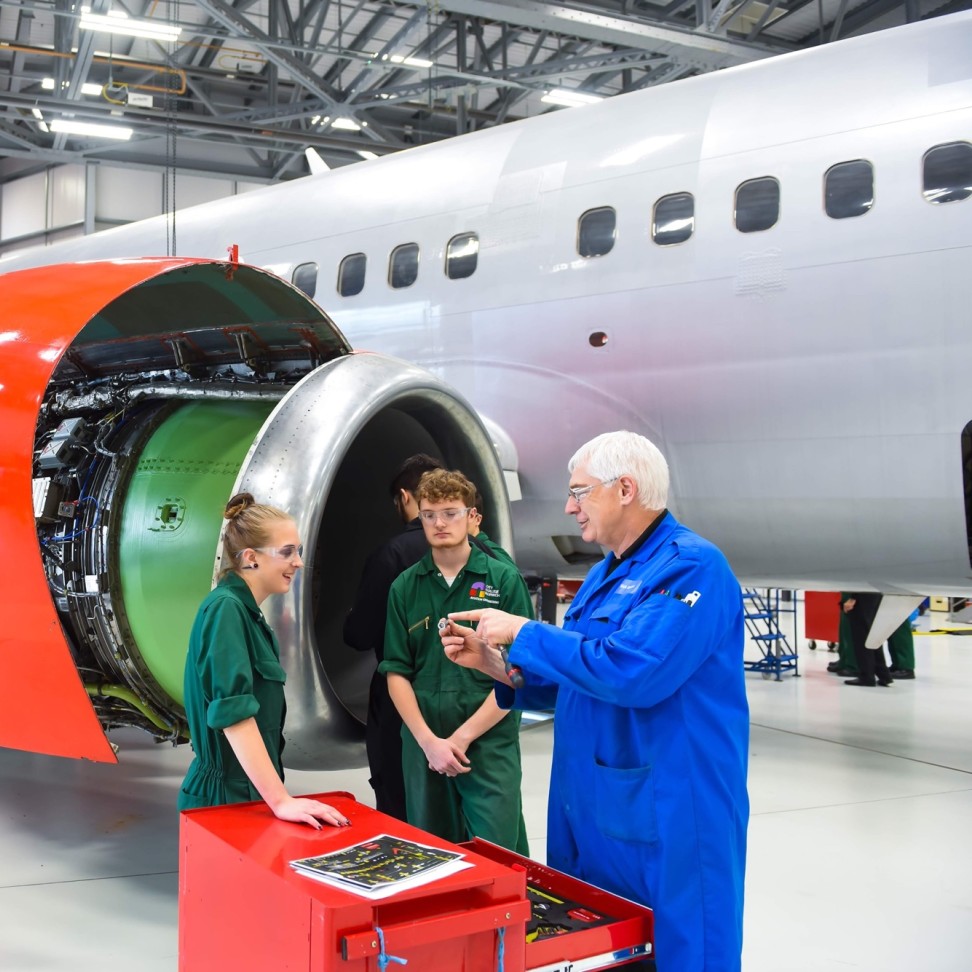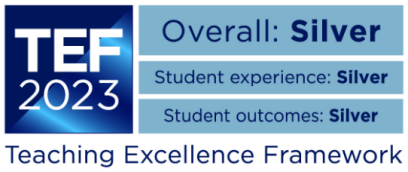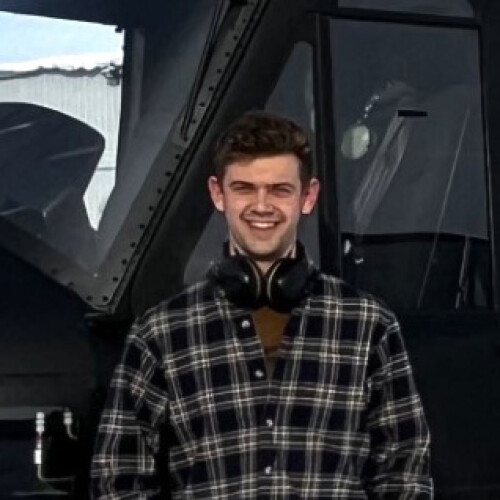FdSc Professional Aviation Engineering Practice (with Foundation Year)

Are you ready to kick start your journey to a high-flying career? This specialist aviation engineering degree course, including a foundation year, will allow you to gain practical experience alongside advanced academic study. Delivered in partnership with KLM UK Engineering and awarded by the University of East Anglia, this course has been designed to ensure you develop the knowledge, technical skills, understanding and awareness necessary to work in technical, supervisory or management roles in the industry.
This programme is subject to validation / revalidation by UEA, ready to accept new entrants from September 2025. Therefore, for next year there may be some changes to this advertised course content following this process.
- Level
- 5
- Entry Point
- Sep 2025
- Duration
- Full Time, 3 years
- Venue
- International Aviation Academy Norwich
- CCN Course Code
- F0097
Reasons to study
this course
This course allows you to work on a fully functional Boeing 737 aircraft in the International Aviation Academy Norwich’s (IAAN) world class Aviation Emulation Zone® whilst studying in our first class learning environment at IAAN.
The programme provides applicants with the opportunity to pass UK CAA (Civil Aviation Authority) Cat B1.1 examinations during the Foundation Degree, alongside academic study for an aviation degree.
Delivery of modules will be in blocks by KLMUKE instructors. This includes a minimum of 2400 hours in the Foundation Degree in a Part 147 environment, as specified in the approved organisations Maintenance Training Organisation's Exposition (MTOE) submitted to the Civil Aviation Authority (CAA), to satisfy the requirements of UKCAA Part 147.
Andy Bullen - Course Leader FdSc Professional Aviation Engineering Practice
Hi, my name is Andy. My career has spanned 34 years in the RAF specialising in Weapons Engineering; working predominantly on Harrier, Tornado and Jaguar but also Hercules, C-17, Tristar, Chinook, Sea King, Typhoon and Jet Provost as well as other armament roles.
After leaving the RAF I have worked at Rolls Royce, Derby managing their Services Control Centre, managing the global fleet; as well as spells in automotive with Jaguar, Land Rover and Lotus where I was responsible for the production line for the Emira.
I am currently the Course Leader in Aviation Engineering based at IAAN, where I am responsible for the Level 6 Degree final year; I hold Fellow Chartered Manager status and also teach leadership and management.
Contact course leaderWhere will this
course take you?
Previous graduates have secured employment at KLM UK Engineering, RyanAir, Virgin and Bombardier. You will be well-equipped to progress into technical, supervisory or management roles in the industry. The sky is the limit!
Student stories
Course structure
This course is studied over 3 years. The foundation year is delivered at the International Aviation Academy Norwich over two days a week, with the remainder of the programme being delivered over five days a week - 30 teaching weeks per year.
Level 3 modules
Aircraft Engineering Fundamentals Subject to change
Subject to change - more information coming soon
Aircraft Hardware and Maintenance Practices Subject to change
Subject to change - more information coming soon
Aircraft and Flight Subject to change
Subject to change - more information coming soon
Aircraft Power Subject to change
Subject to change - more information coming soon
Maintenance Practices Subject to change
Subject to change - more information coming soon
Higher Learning Skills Subject to change
Subject to change - more information coming soon
Level 4 modules
Higher Learning Skills Compulsory
This module is designed to enable you to identify and develop skills for successful higher education study and transferable employability skills. Delivery and assessment is designed to develop study skills through personal reflection and the identification of personal goals and communication skills. The skills are core to any undergraduate programmes.
Assessments:
- Group presentation
- Journal
Human Factors and Legislation Core
This module comprises two parts: the first will look at the way human factors affect aircraft maintenance and flight safety, and the second will focus on the legal framework in which UKCAA Part-66 Licensed Engineers work.
Assessment:
- Case Study
Maintenance Practices Core
This Module provides you with the knowledge required to select and use the appropriate tools, materials, drawings and equipment necessary to perform aircraft maintenance tasks. It also provides you with knowledge necessary to work effectively and safely in an aircraft maintenance environment
The module also introduces you to inspection, testing, repair, assembly and disassembly methodologies as well as the various philosophies that shape or determine the planning and application of aircraft maintenance activities.
Assessment:
- Essay
- Presentation
Materials and Hardware Core
The coursework will require you to produce a technical written report, related to materials and workshops. Whilst being summative, the assignment will also adopt a formative approach to assist you in developing, through feedback, your technical skills.
You will be required to present an analysis of the significance of control cables in terms of overall airworthiness.
Assessments:
- Report
- Presentation
Workshops and Aircraft Practices Core
This module introduces and provides an opportunity for you to develop the hand skills and basic maintenance skills needed by an aircraft maintenance engineer. The module is not intended to turn you into a skilled expert; rather it is designed to provide a thorough introduction and solid grounding for further training, practice and development. The hand-skills experience will include: reading engineering drawings, marking out, cutting, filing, drilling, and thread cutting etc.
As you progress, you will start to increase your skills, these will include: using maintenance manuals, following procedures, completing documentation, and fundamental maintenance activities such as: identifying parts, wire-locking, panel removal and refitment, torque loading, assembly and disassembly. At all times throughout the module, you will be expected to display maturity, integrity, good work practices and have a responsible attitude towards safety.
Assessments:
- Student Portfolio
Application of the Principles of Physics Core
The module extends physics and mathematics knowledge to a level sufficient to underpin key engineering principles. It will prepare you for the applied mathematics and physics required in further study.
Assessment:
- Applied Assignment
Level 5 modules
Engines and Propellers Core
The principles of operation of gas turbine engines are examined using fundamental laws of physics, and the performance of a range of aircraft propulsion systems are assessed. The module also looks at the construction of typical engines by examining the various component parts (stages) of engines in detail. The layout and operation of engine systems (fuel, lubrication, air distribution, anti-icing, starting, ignition, power augmentation and fire systems) are also studied followed by engine monitoring, ground operation and storage. The engines element of the module concludes by examining the construction and operation of typical engine measuring and indication systems. The material covered should enable you to inspect the various engine stages and systems and make independent decisions regarding their serviceability.
The module follows with a look at the aerodynamics principles of propellers, their construction and performance, before looking at propeller assemblies and associated control and monitoring systems. Topics covered include: propeller pitch control, overspeed mechanisms, protection devices, synchronising and synchrophasing.
The depth of study is sufficient to enable system serviceability to be confirmed and basic faults to be investigated so that the action necessary to restore the system to a serviceable condition can be taken.
Assessment:
- Essay
- Report
Electrical Fundamentals Core
This module comprises both theory and practical exercises. The theory is delivered in a series of lectures and the practical involves you completing a series of laboratory sessions designed to reinforce the knowledge gained in the lectures.
This module starts by looking at electrical charge and how electricity is created, before moving on to look at resistors, capacitors and inductors. The construction and identification of each component is described before their uses, properties and characteristics are studied. To aid theoretical information (explained later in the module, where the operation of generators, motors and transformers is explored) the principles of magnetism and induction are studied. A look at DC generators and motors then completes the DC element of electrical fundamentals.
Alternating current (AC) theory starts by investigating how the passive components discussed within the DC element of the module behave in AC circuits. The relationship between: resistance, reactance and impedance; voltage, current and impedance; and reactive, true and apparent power, are examined.
These fundamental relationships are then applied to explain the construction and operation of filter circuits.
Magnetism and induction is then revisited for transformers, before the final section which covers the theoretical aspects of AC generators and motors.
Assessment:
- Presentation
- Practical Competency Tasks
Aeroplane Aerodynamics, Structures and Systems Core
This module is split into two parts: mechanical / aerodynamic and electrical / avionic.
It has structures, aerodynamics and mechanical systems as its primary focus, requiring an in-depth understanding of the underpinning principles and a developed understanding of system layout, function and interaction. The mechanical section provides opportunities to analyse and assess elements of aircraft design, construction and mechanical systems. Aerodynamic principles are used to examine the Theory of Flight and how airflow affects the design and operation of aircraft. The system elements evaluate and describe the layout and operation of the main aircraft mechanical systems, including: flight controls, fuel, hydraulics, pneumatics, and air conditioning / pressurisation.
The electrical / avionics section is investigated in the context of the interrelationships with aircraft structures and other systems, particularly those requiring electrical power for their operation. This section includes an evaluation of Electrical Power Generation and Distribution along with Internal and External lighting systems.
The module also gives an introduction to air data, gyroscopic and compass flight instrument systems and an overview of a number of avionic systems, including: on-board maintenance systems, integrated modular avionics and information systems.
Based on the above theoretical elements, and given a period of time to gain experience of the relevant systems in a maintenance environment, you should be able to determine the serviceability of a system, and investigate and identify basic faults in a system.
Assessment:
- Portfolio
- Essay
Electronic Fundamentals, Digital Techniques and Aerodynamics Core
This module covers a combination of electronic fundamentals, aircraft digital systems / digital techniques, and aerodynamics.
The electronic fundamentals section evaluates semiconductor components such as diodes and transistors, and leads into basic logic gate operation and operational amplifiers. Transducers and synchronous data transmission systems found on aircraft are also considered.
Digital techniques include the review and analysis of combinational and sequential logic circuits, and an introduction to the basic layout and operation of computers and the use of computer technology in aircraft. Aircraft specific databus and network systems, along with display panel technologies, are also studied.
Aircraft digital systems involves investigating the layout, operation and built-in-test equipment (BITE) of a selection of electronic and digital aircraft systems, including: Electronic Flight Instrument systems (EFIS), Electronic Centralised Aircraft Monitor system (ECAM), Engine Indicating and Crew Alerting System (EICAS), ARINC Communication and Addressing and Reporting System (ACARS), Fly-by-Wire (FBW), Inertial Reference Systems (IRS), and the Flight Management System (FMS).
The aerodynamics element of this module will look into the need for a standard atmosphere (ISA), and describe the properties of the atmosphere as applicable to aerodynamics. Airflow around a body and the generation of lift and drag are examined, with relevant terminology and formulae being introduced and calculations performed. Lift augmentation, stability, and high-speed flight are also considered, as are the characteristics of a range of aerofoils appropriate to different aircraft designs.
Assessment:
- Student Portfolio
- Essay
Course details
Assessment methods
There will be a UEA validated assessment per module and UKCAA part 66 modules category B1.1 for select modules. The course includes a diverse range of assessment types, to ensure a wide range of knowledge and skills can be developed, such as: presentations, journals, case studies, essays, written reports, student portfolios, practical competency tasks and more.
Awarded by
This course is awarded by the University of East Anglia and regulated by The Office for Students.


Entry requirements
Standard:
UCAS points
- Our typical offer is 64 UCAS points (please note that a BTEC National Diploma or Certificate in non-engineering subjects may satisfy entry requirements, provided that you have 5 GCSE’s as below)
GCSEs
- GCSE grade 4/C or above in five subjects, including English Language and Mathematics, is required
Interview
- Completion of a successful Interview
Non- standard:
- Completed some EASA / UKCAA Part 66 examinations
- Part completed BCAR Section L licence course
- Aircraft maintenance related work experience
- Other engineering courses or experience
- Completion of a successful interview
Course fees
£9,250 per year for UK students.
£14,335 per year for international students (students from outside of the UK).
We were awarded a TEF Silver rating overall in 2023, achieving this for both student experience and student outcomes.

Search courses
Search CCN HE




